Publications
Articles in Peer-Reviewed Journals

Blanchard Marianne, Bouchet-Valat Milan, Cartron Damien, Greffion Jérôme, Gros Julien, 2024, “La recherche française est-elle prête pour la sobriété ? Les enseignements d’une enquête nationale” [“Can the French research community be frugal? Lessons learned from a national survey”], Natures Sciences Sociétés, 32(2), p. 127-141. NSS [open access]
In a context where a steadily increasing number of scientific studies point out the extent of environmental issues, notably the climate crisis, there is a parallel increase in the number of researchers questioning the ecological impact of their own professional activities. Some actors in the research community are therefore calling for major changes in the practice of science itself to reduce its environmental impact, in particular regarding greenhouse gas (GHG) emissions. To what extent can research become frugal? This article considers the willingness of actors in the research community to alter those research practices which emit the most GHGs, such as air travel or the use of energy-intensive equipment. To this end, we relied on the results of the ‘Research Personnel and Climate Change’ survey conducted in 2020 among more than 6,000 respondents. The survey shows there is a strong consensus on the need to alter research activities to respond to the climate emergency and on the concrete actions to be implemented. However, at the individual level the research personnel find it more difficult to envisage reducing GHG emissions for activities involving the collection and production of data, as well as for disciplines with the highest emissions and for individuals occupying a dominant position in research.

Amossé Thomas, Bouchet-Valat Milan, 2024, “Top-Level Executives and Professionals: A Statistical Definition of Elite Occupations”, Population, 79(1), p. 39‑72.
This article presents the theoretical framework, the construction method and the initial analyses of a new category associated with the official French socio-economic classification (Professions et catégories socioprofessionnelles [PCS 2020]), named ‘top-level executives and professionals’, which aims to identify the most top-ranking occupations in French society. This category identifies, among managers, professionals and higher-level intellectual occupations, the upper fraction of positions (salaried or otherwise) involving major responsibilities in work organizations and/or recognized high-level expertise. Identified on the basis of their title and occupational characteristics, these positions correspond to an ‘occupational elite’ (3% of the working population) that bridges the sociology of stratification and the sociology of elites. Through its inclusion in public statistical surveys, this category provides a new approach for analysing socio-economic inequalities, complementary to those based on educational level or income. As an initial illustration of its potential empirical utility, this article provides evidence of very strong intergenerational reproduction at the top of the social hierarchy.

Bouchet-Valat Milan, Kamiński Bogumił, 2023, “DataFrames.jl: Flexible and Fast Tabular Data in Julia“, Journal of Statistical Software, 107(4), p. 1-32.
DataFrames.jl is a package written for and in the Julia language offering flexible and efficient handling of tabular data sets in memory. Thanks to Julia’s unique strengths, it provides an appealing set of features: Rich support for standard data processing tasks and excellent flexibility and efficiency for more advanced and non-standard operations. We present the fundamental design of the package and how it compares with implementations of data frames in other languages, its main features, performance, and possible extensions. We conclude with a practical illustration of typical data processing operations.

Boertien Diederik, Bouchet-Valat Milan, 2022, “Are Increasing Earnings Associations Between Partners of Concern for Inequality? A Comparative Study of 21 Countries“, Social Forces, 101(2), p. 639–664. Oxford University Press Post-print [open access]
Working Paper: LIS Working Paper 793 [open access]
Partners increasingly resemble each other in terms of earnings across Western countries. These increases in earnings similarity are often considered to be drivers behind growing income inequality between households. We argue that increases in earnings similarity do not necessarily lead to augmented inequality between households. Their overall effect depends on whether and how the processes that increase earnings similarity affect inequality through other pathways. Using data from the Luxembourg Income Study on 21 countries we decompose changes over time in earnings inequality. We show that even though the correlation in earnings between partners increased in most countries, this only amplified inequality on some occasions. In several countries, increases in the earnings correlation are driven by general changes in employment rates. Given that these increases in employment equalized earnings across households through other pathways, the inherently connected increases in the earnings correlation are of less concern from an inequality perspective. In other countries, where increases in earnings similarity are produced by augmented similarity in earnings among dual-breadwinner couples or by selective changes in employment, increases in earnings similarity are of more concern for inequality between households.

Blanchard Marianne, Bouchet-Valat Milan, Cartron Damien, Greffion Jérôme, Gros Julien, 2022, “Concerned yet polluting: A survey on French research personnel and climate change“, PLOS Climate, 1(9), e0000070. PLOS [open access]
We present a survey of the French research community and climate change carried out in 2020. It is one of the largest surveys ever conducted on this issue: it is based on a sample of more than 6,000 respondents representative of the French public sector research community, regardless of their status and discipline. On the one hand, it measures practices that emit large amounts of greenhouse gases, such as air travel, and addresses the differences between disciplines and within them according to different individual characteristics (gender, status, location, etc.). On the other hand, it questions the representations of research actors concerning the climate emergency, and what they are willing to do to reduce their emissions. The survey highlights three results: first, an acute awareness of environmental and climate issues widely shared by members of the scientific community; second, a willingness to implement changes; and third, a clear gap between these attitudes and practices that still emit large amounts of greenhouse gases. This raises the question of the role of research institutions, whose support is required to implement profound reforms in the organization of research activities.
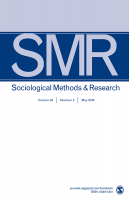
Bouchet-Valat Milan, 2022, “General Marginal-free Association Indices for Contingency Tables: From the Altham Index to the Intrinsic Association Coefficient”, Sociological Methods & Research, 51(1). Sage Post-print [open access]
Notwithstanding a large body of literature on log-linear models and odds ratios, no general marginal-free index of the association in a contingency table has gained a wide acceptance. Building on a framework developed by L. A. Goodman, we put into light the direct links between odds ratios, the Altham index, the intrinsic association coefficient, and coefficients in log-multiplicative models including Unidiff and row-column association models. We devise a normalized version of the latter coefficient varying between 0 and 1, which offers a simpler interpretation than existing indices similar to the correlation coefficient. We illustrate with the case of educational and socioeconomic homogamy among 149 European regions how this index can be used either alone in a non- or semiparametric approach or combined with models, and how it can protect against incorrect conclusions based on models which rely on strong assumptions to summarize the strength of association as a single parameter.

Bouchet-Valat Milan, Grobon Sébastien, 2021, “Parents’ attitudes to their children’s partner choice: a century of change“, Population & Societies, p. 1-4.
How has the parents’ role in their children’s choice of partner evolved since the early 20th century in France? Analysing three surveys conducted over the last 60 years, Milan Bouchet- Valat and Sébastien Grobon retrace the rise of love marriages and the expansion of partner searches at the expense of matches supervised by the family. While parents are more tolerant of their children’s choice of partner than they were 50 years ago, their more liberal attitude follows a long period of mounting tension that culminated around 1968.

Bouchet-Valat Milan, Jayet Cyril, 2019, “La mesure des classes sociales par les nomenclatures : enjeux, problèmes et débats” [“Measuring social classes using classifications: Stakes, issues and debates”], L’Année sociologique, 69(2), p. 311-331.
The article presents and discusses contemporary theories of social classes which use socioprofessional or socioeconomic classifications. We first give an overview of these theories before examining and discussing seven major issues that each classification addresses in its own way.

Bouchet-Valat Milan, Grobon Sébastien, 2019, “Once Homogamous, Always Homogamous? Educational Level and Career Similarity of Couples in France Who Meet at School”, Population, 74(1/2), p. 131‑154. Cairn [open access]
Drawing on data from the EPIC study of individual and conjugal trajectories (Étude des parcours individuels et conjugaux, INED-INSEE, 2013–2014, France), this article analyses the context in which couples met, the level of education they reached, and their subsequent careers. It calls into question the claim that longer education bolsters partners’ educational and socioeconomic similarity and exacerbates inter-couple inequality in the population at large. The proportion of couples who meet in an educational context has risen across birth cohorts. However, for relationships that were in progress at the time of the survey, separations and repartnering greatly attenuate the impact of this increase. As expected, partners who met at school show very similar educational levels. But while educational homogamy works in favour of occupational status homogamy at both the time the relationship started as well as at the time of the survey, that tie is quite weak. Having met at school only slightly affects the difference between partners’ occupational positions. Gender-specific inequalities (hypergamy) ultimately appear stronger than homogamy: it is in couples where the woman’s level of education is higher than the man’s that the occupational gap in the man’s favour is smallest.

Bouchet-Valat Milan, 2018, “Hypergamie et célibat selon le statut social en France depuis 1969 : une convergence entre femmes et hommes ?” [“Hypergamy and Singlehood by Social Position in France Since 1969: A Convergence Between Women and Men?”], Revue de l’OFCE, 160, p. 5-45. OFCE [open access] Cairn [open access]
Couples in which the woman is more educated than her partner are now the majority in France: female hypergamy has reversed. This article updates this result based on Labor Force Survey data, and shows a similar though less marked trend regarding occupational status: the proportion of women belonging to a social class (EGP schema) higher than their partner’s has increased from 13% in 1969 to 23% in 2016. No hypergamy is observed in terms of social class of origin. We confirm the classical theory relating hypergamy to a gender-asymmetric distribution of singlehood. Although singles used to be more frequent among women with a higher status, this relation has disappeared or even reversed over time. The distribution of singles among women has become closer to that among men.
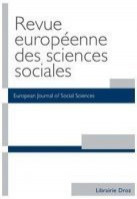
Bouchet-Valat Milan, 2018, “Educational and socioeconomic homogamy, development level and metropolisation across 149 European regions”, European Journal of Social Sciences/Revue européenne des sciences sociales, 56(1), p. 53-84. Cairn Pre-print [open access]
Working paper in French: Bouchet-Valat Milan, 2018, “Homogamie éducative et socioéconomique, niveau de développement et métropolisation dans 149 régions d’Europe”, Ined, Working paper, n°236. Ined [open access]
Considered as a key index of social stratification, social homogamy (i.e. resemblance of partners within couples) has been used by a sociological research stream to put to the test modernisation and industrialisation theories, which hold that development comes together with a less rigid class structure and a weaker role of kinship in individual destinies. This article applies for the first time this reasoning at the sub-national scale using data regarding 149 regions of 26 European countries in 2014-2016 (European Labour Force Surveys, Eurostat). We show that educational and socioeconomic homogamy get weaker when disposable income per inhabitant increases, but that it stabilises beyond a level corresponding to the average income of studied regions. This relation also holds between regions belonging to a given country once the stronger homogamy of capitals and large metropolises is controlled for.
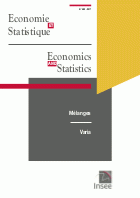
Bouchet-Valat Milan, 2017, “Does women’s employment growth increase wage inequalities between couples? The case of France between 1982 and 2014”, Economics and Statistics, 493, pp. 67-86.
It has often been argued that women’s employment growth is a factor that contributes to the increase in inequalities between households due, in particular, to an alleged reinforcement of social homogamy. In contrast to this idea, an accounting approach to inequality decomposition, based on Insee’s Labour Force surveys (enquêtes Emploi) shows that wage inequalities between couples aged 30 to 59 remained stable between 1982 and 2014 in France, whereas they would have increased had women’s employment rate not risen. This overall stability results from two converse developments, which are themselves linked to the strong growth in women’s employment over this period: a fall in wage inequality between women and an increase in the correlation of partners’ wages within couples. However, the almost uniform increase in women’s employment rate, regardless of their partner’s wage level, has limited the increase in the correlation of partners’ wages and prevented an increase in wage inequalities between couples.
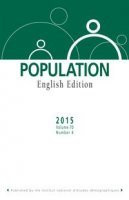
Bouchet-Valat Milan, 2015, “Fewer Singles among Highly Educated Women. A Gender Reversal of Hypergamy across Cohorts in France”, Population, 70(4), pp. 705-730.
In France today, women are more highly educated than men. This has affected first union formation and the traditional tendency – known as female hypergamy – for women to form unions with men who are more educated than themselves. Using data from the Family History survey (Étude de l’histoire familiale, INSEE-INED, 1999), Milan Bouchet-Valat analyses the educational characteristics of partners in a first union and the rate of permanent singlehood by educational level across cohorts, starting with those born in the 1920s. Disentangling structural effects from gender effects, he questions the existence of a norm of female hypergamy capable of withstanding the changing gender composition of the highly educated, and reveals deep-seated changes in the prevalence of male and female permanent singlehood by educational level.
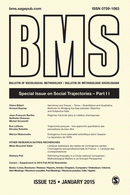
Bouchet-Valat Milan, 2015, “L’analyse statistique des tables de contingence carrées - L’homogamie socioprofessionnelle en France - I. L’analyse des correspondances” [“Statistical Analysis of Square Contingency Tables - Socioeconomic Homogamy in France - I. Correspondence Analysis”], Bulletin of Sociological Methodology, 125, pp. 65–88.
Correspondence analysis (CA) is a powerful technique, commonly used by sociologists to summarize the structure of the association observed in a contingency table (also known as cross-table). In contrast, approaches derived from CA, or similar in their use, but offering superior properties, are only known by a restricted audience in France: the CA of incomplete contingency table and log-multiplicative association models. This first article uses classic CA and CA of incomplete contingency table to analyze a socioeconomic homogamy table (based on the two-digit catégories socioprofessionnelles of the spouses) from the INSEE Labour Force Surveys conducted between 2003 and 2010. It shows the interest of giving a special status to endogamous couples (in which the spouses belong exactly to the same group), in order to represent better the social space.
Bouchet-Valat Milan, 2015, “L’analyse statistique des tables de contingence carrées - L’homogamie socioprofessionnelle en France II. L’apport des modèles d’association” [“Statistical Analysis of Square Contingency Tables - Social-professional Homogamy in France II. The Contribution of Association Models”], Bulletin of Sociological Methodology, 126, pp. 5–27.
Contrary to correspondence analysis (CA), log-multiplicative association models are only known by a restricted audience in France. This second article uses the latter technique to analyze a socioeconomic homogamy table (based on the two-digit catégories socioprofessionnelles of the spouses) from the INSEE Labour Force Surveys conducted between 2003 and 2010. It illustrates the strong resemblance between the two approaches, and highlights the advantages brought by the greater flexibility of association models. They provide a view of the social space both more accurate and easier to interpret than CA, in particular by giving special status to endogamous couples (in which the spouses belong exactly to the same group). They also allow us to analyze specifically men-women asymmetries which emerge from the choice of a spouse (hypergamy), an essential issue poorly apprehended by classical methods.

Bouchet-Valat Milan, 2014, “Changes in Educational, Social Class and Social Class of Origin Homogamy in France (1969–2011): Greater Openness Overall but Increased Closure of Elites”, Revue française de sociologie, 55(3), pp. 324–364.
Tables and code ![]() Other homogamy tables
Other homogamy tables
Despite the relevance of homogamy for the study of social structure, the few existing French studies on the evolution of homogamy have significant weaknesses. This article aims to fill this gap by studying the evolution of educational, social class and social class of origin homogamy (following the Erikson–Goldthorpe–Portocarero—EGP classification) within cohabiting couples, using 42 Labour Force Surveys conducted by INSEE between 1969 and 2011. Homogamy is shown to have clearly declined in all three of the components studied, both in absolute terms and beyond what would be expected as a result of structural changes to the population. Endogamy has declined for almost all groups and the dimensions of social space for partner choice have become largely unimportant. In particular, the specificity of persons with no qualifications, of the self-employed, and of agricultural occupations has very clearly diminished. Only the endogamy of graduates of grandes écoles has increased. Finally, these results are related to changes in class-consciousness, socio-spatial segregation and economic inequality.

Bastin Gilles, Bouchet-Valat Milan, 2014, “Media Corpora, Text Mining, and the Sociological Imagination - A Free Software Text Mining Approach to the Framing of Julian Assange by Three News Agencies Using R.TeMiS”, Bulletin of Sociological Methodology, 122, p. 5‑25. SAGE
In this paper, we introduce R.TeMiS, a free software solution aimed at exploring new dimensions in text mining with a particular focus on media framing analysis. R.TeMiS is especially designed to provide help in a) the automation of corpus construction and management procedures based on the use of large media content data bases, and b) the extension of the range of statistical tools available to social scientists exploring texts through R coding (one and two-way tables, time series, hierarchical clustering, correspondence analysis, geographical mapping…). A case study on the media framing of Julian Assange from January 2010 to December 2011 is conducted. It is based on the analysis of a corpus of 667 news dispatches published in English by the three top international news agencies: Agence France-Presse (AFP), Reuters and Associated Press (AP).

Bouchet-Valat Milan, Bastin Gilles, 2013, “RcmdrPlugin.temis, a Graphical Integrated Text Mining Solution in R”, The R Journal, 5(1), pp. 188–197.
We present the package RcmdrPlugin.temis, a graphical user interface for user-friendly text mining in R. Built as a plug-in to the R Commander provided by the Rcmdr package, it brings together several existing packages and provides new features streamlining the process of importing, managing and analyzing a corpus, in addition to saving results and plots to a report file. Beyond common file formats, automated import of corpora from the Dow Jones Factiva content provider and Twitter is supported. Featured analyses include vocabulary and dissimilarity tables, terms frequencies, terms specific of levels of a variable, term co-occurrences, time series, correspondence analysis and hierarchical clustering.
Special Issues

Bouchet-Valat Milan, Jayet Cyril (eds.), 2019, “Les classes sociales et leurs mesures” [“Social Classes and Their Measurements”], L’Année sociologique, 69(2), p. 291–552.
Book Chapters

Bouchet-Valat Milan, 2025, “Célibat et norme conjugale : exclusions et explorations à l’ombre du couple” [“Singlehood and the Conjugal Norm: Exclusions and Explorations in the Shadow of the Couple“], in Marie Bergström (ed.), La sexualité qui vient. Jeunesse et relations intimes après #MeToo [The Coming Sexuality. Youth and Intimate Relationships After #MeToo], Paris, La Découverte, p. 271-283.

Bouchet-Valat Milan, Bozon Michel, 2025, “La géographie intime. Lieux de rencontre et caractéristiques des partenaires” [“Intimate Geography. Meeting Places and Partners’ Characteristics“], in Marie Bergström (ed.), La sexualité qui vient. Jeunesse et relations intimes après #MeToo [The Coming Sexuality. Youth and Intimate Relationships After #MeToo], Paris, La Découverte, p. 139-150.

Trimarchi Alessandra, Bouchet-Valat Milan, 2025, “Changes Over Time in the Association Between Parental Background and Children’s Enrolment in Education”, in Pollice Alessio, Mariani Paolo (eds.), Methodological and Applied Statistics and Demography II, Cham, Springer, p. 322-328.
Springer Accepted Version [open access]
Rising social inequalities have become an important policy concern. In time of crisis, enhancing education is seen as a strategy to fight poverty and to ensure social and territorial cohesion. As an illustration, in 2010 the European Commission launched Europe 2020, a plan which aimed, among other things, to reduce school dropout. Several studies have focused on the links between school dropout and parental background, but less attention has been paid to variation across countries and trends over time. In this study, we want to fill this gap by using the European Labour Force Surveys (EU-LFS) of 26 countries, for the years 2004–2019. We focus on children aged 15–19, a key age group for completion of the upper-secondary level, which is necessary to access tertiary education. Results show that, in all European regions, children living with medium and highly educated parents, especially the mother, are more likely to be enrolled in formal education relatively to children with low educated parents. This effect seems to be more prominent in Central and South-Eastern European countries, while it is smaller in other regions of Europe. Changes over time show that only in some European regions the effect of parents’ education on children’s enrolment becomes weaker.

Bouchet-Valat Milan, Peugny Camille, Vallet Louis-André, 2016, “Inequality of Educational Returns in France. Changes in the Effect of Education and Social Background on Occupational Careers”, in Bernardi Fabrizio, Ballarino Gabriele (eds.), Education, Occupation and Social Origin. A Comparative Analysis of the Transmission of Socio-Economic Inequalities, Cheltenham, Edward Elgar.
Elgar Online [Introduction in open access]
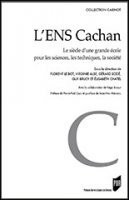
Auzière Alexia, Bouchet-Valat Milan, Chevalier Martin, De Lisi Laura, Poullaouec Tristan, 2013, “Les formes de sélection des normaliens par le concours d’entrée à l’ENS Cachan” [“The Forms of Selection of ENS Cachan Students Through the Entrance Examination”], in Le Bot Florent, Albe Virginie, Bodé Gérard, Brucy Guy, Chatel Elisabeth (eds.), L’ENS Cachan : Le siècle d’une grande école pour les sciences, les techniques, la société, Rennes, Presses Universitaires de Rennes, pp. 315–329.
Ph.D. Thesis
Bouchet-Valat Milan, 2015, The Wheels of Love and Chance. Homogamy and Hypergamy in Contemporary France and Europe: Socioeconomic and Educational Dimensions, Variations and Mechanisms, Ph.D. Thesis in Sociology, Paris, Sciences Po, 610 p.
Table of contents and summary [in English] Full manuscript [in French]
Magna cum laude. Supervisor: Louis-André Vallet (OSC-CNRS). Jury: Francesco Billari (University of Oxford), Philippe Coulangeon (OSC-CNRS), Brendan Halpin (University of Limerick), Éva Lelièvre (Ined), Louis-André Vallet (OSC-CNRS).
The persistence of social homogamy is regularly observed; the tendency to form couples in which the woman occupies a lower position than her partner – female hypergamy – is also well documented: love is far from blind to social distinctions. Yet, it was concluded somewhat too fast from this major result that these phenomena have remained stable over time. This thesis shows, based on large-scale survey data, that education, social class and social class of origin homogamy has significantly weakened over the last forty years in France. This trend goes beyond what changes in the population structure would have implied (relative homogamy): the composition of couples has become closer to a random mating situation. Hypergamy has also clearly diminished, and has even reversed regarding education; females hold higher qualifications than their partners since the year 2000. As a consequence, the higher celibacy rate of women with a high social status, in particular that of the higher educated, which stemmed from their unfavorable position on the conjugal market, has converged to that of other groups. The variations of these two dimensions of partner choice over 64 regions of Europe in the 2000s are also sizable. Educational homogamy is higher than socioeconomic homogamy; hypergamy is the most frequent situation, but it is not an absolutely general pattern. The degree of cultural liberalism and of social openness appears as the strongest determinant of these two phenomena. They are negatively correlated with female labor force participation, but their relationship with economic inequalities is ambiguous.
Book Reviews
Bouchet-Valat Milan, 2018, “European Classes. About C. Hugrée, É. Penissat and A. Spire, Les classes sociales en Europe. Tableau des nouvelles inégalités sur le vieux continent, Agone”, Books & Ideas, May 3rd. Open access
Bouchet-Valat Milan, 2018, “About: A. Schmitz, 2017, The Structure of Digital Partner Choice. A Bourdieusian Perspective, New York, Springer, 219 p.”, Population, 73(1), p. 162-164. Cairn
